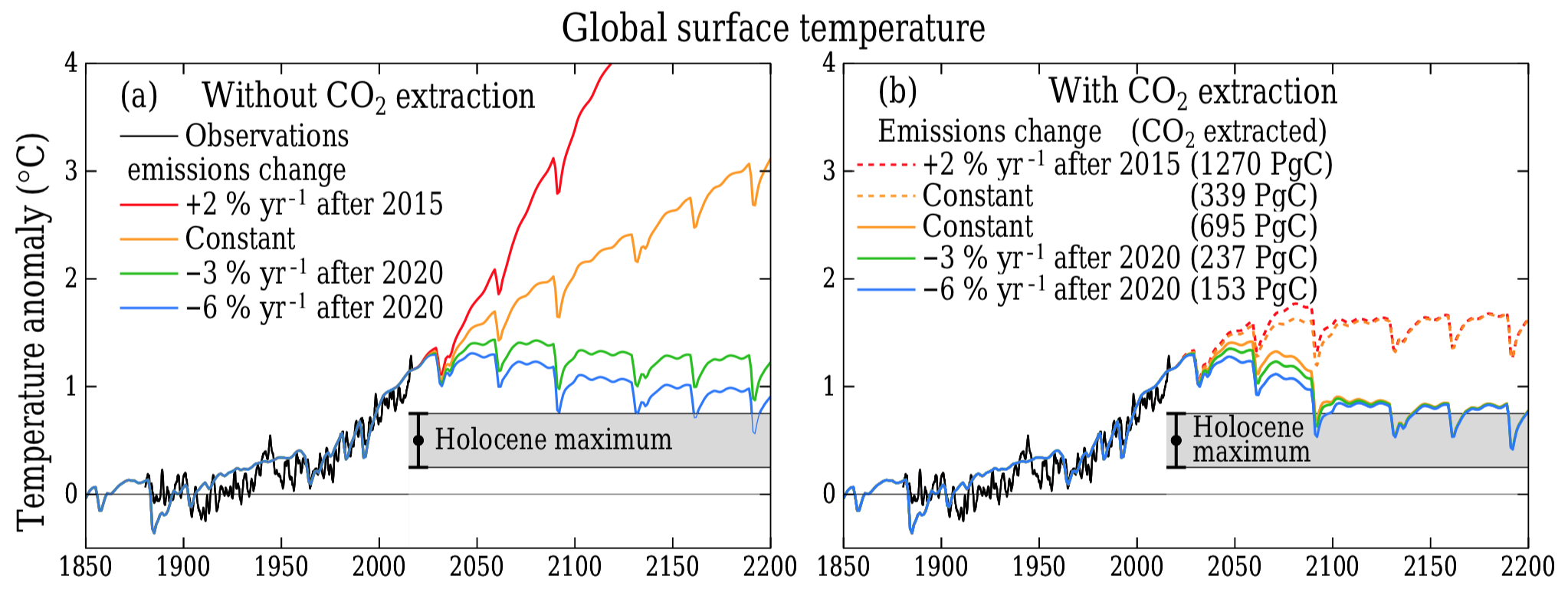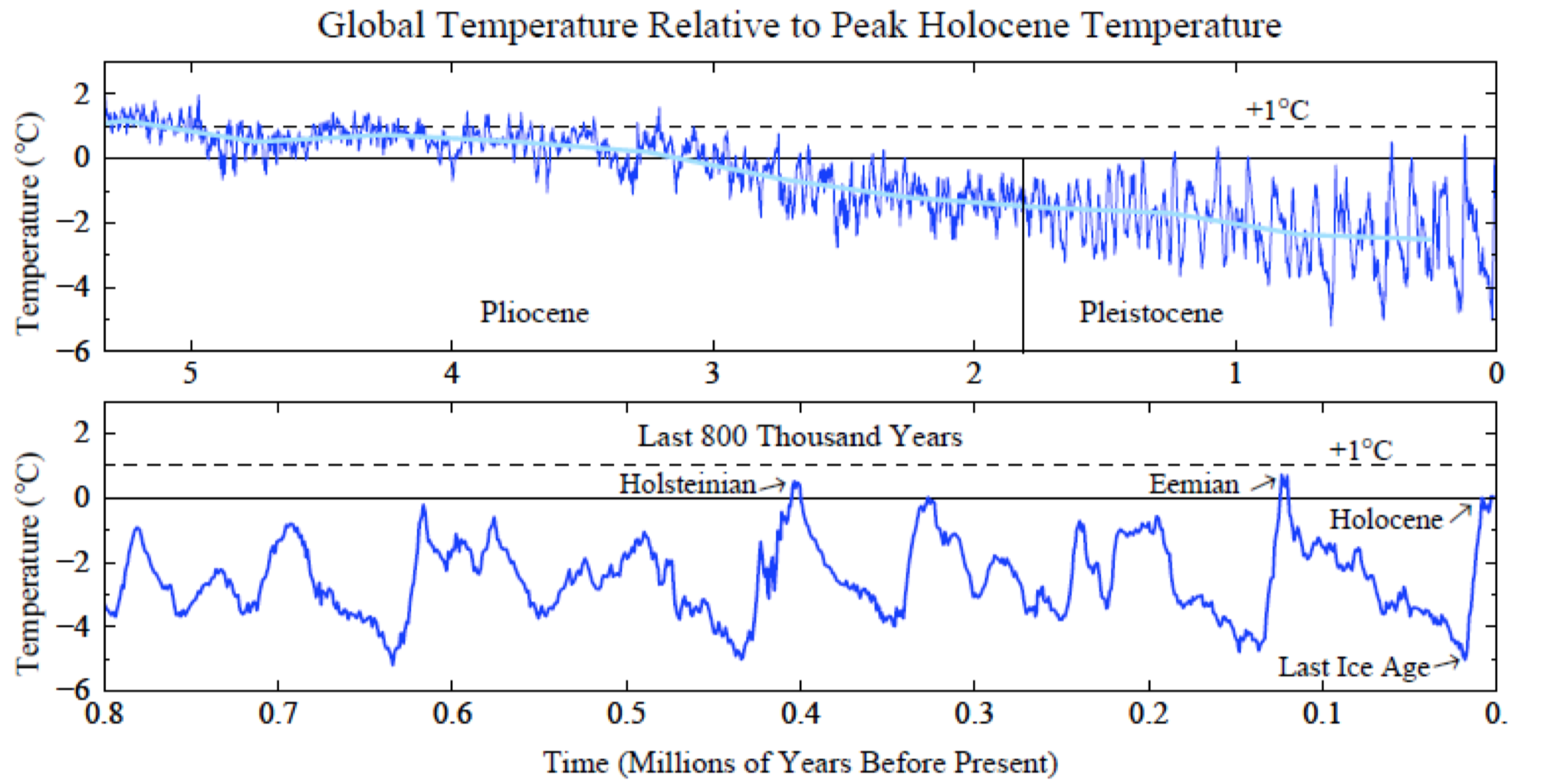Dr Hansen has published many studies, in conjunction with other scientists about climate change.1
Dr. James Hansen, formerly Director of the NASA Goddard Institute for Space Studies, is an Adjunct Professor at Columbia University’s Earth Institute, where he directs a program in Climate Science, Awareness and Solutions. Dr. Hansen is best known for his testimony on climate change to congressional committees in the 1980s that helped raise broad awareness of the global warming issue. He was elected to the National Academy of Sciences in 1995 and was designated by Time Magazine in 2006 as one of the 100 most influential people on Earth. He has received numerous awards including the Carl-Gustaf Rossby and Roger Revelle Research Medals, the Sophie Prize and the Blue Planet Prize. Dr. Hansen is recognized for speaking truth to power, for identifying ineffectual policies as greenwash, and for outlining actions that the public must take to protect the future of young people and other life on our planet.
James E. Hansen, Feb 2019, CV2
Hansen makes the point that 1.5℃ is not safe because it’s warmer than anytime of the Holocene, and as warm as the Eemian when seas were 6–9m higher. Instead, Hansen prescribes changes needed to reduce atmospheric CO2 to less than 350 ppm, in order to limit global temperature close to the Holocene range.
Dutton et al. (2015) conclude that the best estimate for Eemian temperature is +1℃ relative to preindustrial. Consistent with these estimates and the discussion of Masson-Delmotte et al. (2013), we assume that maximum Eemian temperature was +1℃ relative to preindustrial with an uncertainty of at least 0.5℃.
These considerations raise the question of whether 2℃, or even 1.5℃, is an appropriate target to protect the well-being of young people and future generations. Indeed, Hansen et al. (2008) concluded that “if humanity wishes to preserve a planet similar to that on which civilization developed and to which life on Earth is adapted, …CO2 will need to be reduced… to at most 350 ppm, but likely less than that”, and further “if the present overshoot of the target CO2 is not brief, there is a possibility of seeding irreversible catastrophic effects”.
A danger of 1.5 or 2℃ targets is that they are far above the Holocene temperature range. If such temperature levels are allowed to long exist they will spur “slow” amplifying feed-backs (Hansen et al., 2013b; Rohling et al., 2013; Masson-Delmotte et al., 2013), which have potential to run out of humanity’s control. The most threatening slow feedback likely is ice sheet melt and consequent significant sea level rise, as occurred in the Eemian, but there are other risks in pushing the climate system far out of its Holocene range. Methane release from thawing permafrost and methane hydrates is another potential feedback, for example, but the magnitude and timescale of this is unclear (O’Connor et al., 2010; Quiquet et al., 2015).
Here we examine the fossil fuel emission reductions required to restore atmospheric CO2 to 350 ppm or less, so as to keep global temperature close to the Holocene range, in addition to the canonical 1.5 and 2℃ targets.
Hansen et al., 2017, Young people’s burden: requirement of negative CO2 emissions5
Chart 2 shows a range of pathways, and three in (b) return global surface temperature to within our range of uncertainty about the Holocene maximum (0.25℃ to 0.75℃).
The early Holocene maximum in the Marcott et al. (2013) data thus reaches +0.5˚C relative to the 1880–1920 mean of modern data. The formal 95% confidence bounds to Holocene temperature (Marcott et al., 2013) are ±0.25˚C, but total uncertainty is larger.
Hansen et al., 2017, Young people’s burden: requirement of negative CO2 emissions5

Note the units for CO2 extraction (i.e. CDR) above are of units peta-grams of carbon (PgC). This is equivalent to billions of tons of carbon (GtC). To compare these quantities with those from the previous section, and so convert GtC to GtCO2, they must be multiplied by 44/12 (the ratio of the molecular weight of CO2 to C).
The green pathway shown demands 869GtCO2 and a CO2 reduction rate of -3%/yr (i.e. CO2 emissions in 2030 reduced to two thirds of 2020 level). This is very similar to the IPCC’s pathway 1.5°C-with-low-overshoot that prescribes an annual CO2 reduction rate of -4.5%/yr and CDR of about 800 GtCO2, but Hansen & Co state the global surface temperature in 2100 would lower, to less than +1°C.
The blue pathway is more precautionary by relying more on CO2 reduction (-6%/yr) and less on CDR (153PgC or 561 GtCO2). This quantity of CDR still demands an annual quantity of CDR removal about the size of the global ocean by 2100. This now seems an inescapable requirement.
- http://www.columbia.edu/~jeh1/publications.shtml[↩]
- http://www.columbia.edu/~jeh1/hansencv_201804.pdf[↩]
- p. 2, Fig 1,Hansen, E. and July, M.S., 2011. 1 Earth’s Climate History: Implications for Tomorrow, http://citeseerx.ist.psu.edu/viewdoc/download;jsessionid=8A90600FD57AFB297D594453B4B98A18?doi=10.1.1.702.5478&rep=rep1&type=pdf[↩]
- https://www.metoffice.gov.uk/about-us/press-office/news/weather-and-climate/2018/2019-global-temperature-forecast[↩]
- Hansen, J., Sato, M., Kharecha, P., von Schuckmann, K., Beerling, D. J., Cao, J., Marcott, S., Masson-Delmotte, V., Prather, M. J., Rohling, E. J., Shakun, J., Smith, P., Lacis, A., Russell, G., and Ruedy, R.: Young people’s burden: requirement of negative CO2 emissions, Earth Syst. Dynam., 8, 577-616, https://doi.org/10.5194/esd-8-577-2017, 2017. https://www.earth-syst-dynam.net/8/577/2017/[↩][↩]
- Hansen, J., Sato, M., Kharecha, P., von Schuckmann, K., Beerling, D. J., Cao, J., Marcott, S., Masson-Delmotte, V., Prather, M. J., Rohling, E. J., Shakun, J., Smith, P., Lacis, A., Russell, G., and Ruedy, R.: Young people’s burden: requirement of negative CO2 emissions, Earth Syst. Dynam., 8, 577-616, https://doi.org/10.5194/esd-8-577-2017, 2017.[↩]
